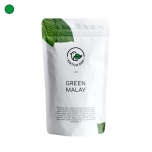 Kratom is a Southeast Asian medicinal plant that has gained popularity in the West. It's a natural alternative to medications.
Kratom is a Southeast Asian medicinal plant that has gained popularity in the West. It's a natural alternative to medications.
Its popularity has not been without controversy. This article will explore Kratom’s history, its legal status, as well as scientific evidence.
We will also discuss future research and the role that organizations and governments play in regulating Kratom. Join us as we predict the trends that could shape Kratom’s future.
Kratom's Historical Journey
Kratom is a tropical tree native to Southeast Asia that has been used in traditional medicine for centuries.
The journey of cannabis to become a global phenomenon began with European explorers in the 19th Century. It gained considerable attention in Western countries in the early 2000s due to its potency in pain relief and opioid withdrawal.
Despite controversy over its legality and safety, kratom is generating significant interest in the scientific community to better understand its therapeutic effects.
Recent research has focused on its pharmacology, possible risks and benefits and how they may influence future trends and regulations.
Kratom’s history as a regional herb remedy and now a topic of international debate highlights the constant balance between public health and safety.
The future of kratom will be determined by the research that continues and new scientific and policy developments, which reflect its role in both traditional and modern medicine.
Current State of Kratom
Kratom is experiencing rapid growth due to the growing interest of consumers in natural health products.
The market has exploded with kratom extracts and powders that cater to different uses, such as mood enhancement or pain relief.
Despite its growing popularity, kratom’s legal status is a complex matter. It varies widely between regions and impacts its availability, as well as the future of the industry.
The market is poised to expand, but it faces a difficult landscape that includes regulatory uncertainty and the need for additional research to fully understand the effects of kratom.
The future of the kratom industry depends on its ability to balance responsible practices with innovation, in an ever-changing legal and consumer landscape.
Emerging Usage Trends
The kratom market is at the crossroads between innovation and regulation. It embraces new product forms, sustainability and shapes its future as a global wellness industry.
These trends show kratom’s increasing acceptance, and how the industry is focused on the needs of consumers and safety.
Product Innovation and Consumer Preferences
Super Speciosa Jolt, a soft gel containing Kratom extract, is a product that demonstrates rapid innovation in the kratom industry. This shift has been made to more discreet, convenient and potent kratom.
These products have been designed to meet the consumer's demands for efficiency and ease of use, reflecting the trend toward customized wellness solutions.
These products, such as soft gels and edibles, are a reflection of a market that is responsive to consumer preferences. They prioritize both efficacy and experience.
Market Growth and Distribution Channels
The market for kratom is estimated to be worth $1.6 billion in 2020. It will grow at a rate of 17.2% CAGR, and reach $4.8 billion by the year 2029.
The growth of online sales is a result of the increasing demand from consumers and the shift to online sales that offer convenience and greater accessibility.
Many small and medium businesses thrive both online and offline. Businesses are vying to attract customers in a highly competitive environment, as they compete for attention amid rising popularity and regulatory issues.
Booming Factors
The industry boom is due to several factors, including increased public awareness of the benefits of kratom, a growing demand for natural alternatives and its legal status, which provides a solid basis for business growth.
The industry is driven forward by positive reviews, and online platforms that allow for a wider reach, high profit margins, continuous innovation, and differentiation.
The elements show the dynamic nature and growth of the kratom industry. Businesses are leveraging consumer feedback and technology to increase their competitiveness.
Challenges and Opportunities
Quality Control remains an important challenge to ensure product integrity and safety for consumers in the face of rapid market expansion.
Alternative herbal products also pose a stiff challenge to the kratom market, which highlights the importance of differentiation as well as consumer awareness.
The future of the industry is shaped by market trends, regulatory environments, and social influences. Strategic marketing and quality assurance are essential to maintaining growth and consumer confidence.
Consumer Trends and Analytics
Analytics indicate that consumer preferences and trends are changing, with a focus on wellness, alternative remedies, and health benefits.
As market trends change, so do strategies used by businesses to retain and attract customers.
Conclusion
There are both opportunities and challenges for the future of kratom. Further research will help to clarify the health benefits and risks.
As advocacy groups take a greater role in influencing policies, the legal status could change. Consumer preferences could change as people learn more about kratom.
Organizations and governments should address their concerns, while also considering the potential of this natural remedy.
The future of kratom depends on continued research, collaboration and balanced regulation.
Please note that this article on kratom is for informational purposes only and not a substitute for professional medical advice, diagnosis, or treatment.






